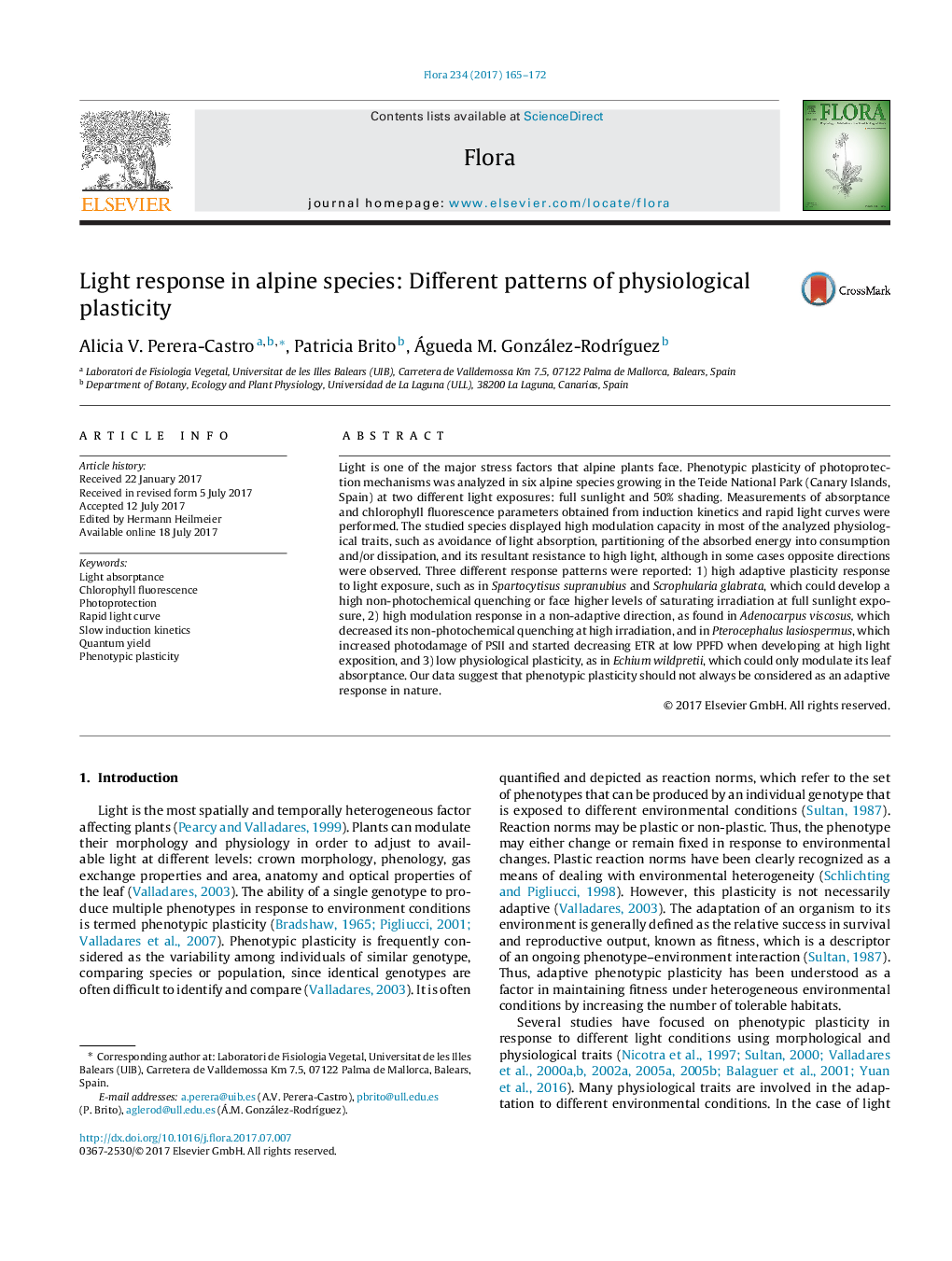| کد مقاله | کد نشریه | سال انتشار | مقاله انگلیسی | نسخه تمام متن |
|---|---|---|---|---|
| 5532325 | 1549925 | 2017 | 8 صفحه PDF | دانلود رایگان |
- Species showed diverse strategies to deal with high light in alpine ecosystem.
- ÎpH-dependent heat dissipation was the most successful photoprotective mechanism.
- High plasticity was found in most photoprotection traits of these species.
- Photoprotection traits could be modulated in alpine species in a non-adaptive way.
Light is one of the major stress factors that alpine plants face. Phenotypic plasticity of photoprotection mechanisms was analyzed in six alpine species growing in the Teide National Park (Canary Islands, Spain) at two different light exposures: full sunlight and 50% shading. Measurements of absorptance and chlorophyll fluorescence parameters obtained from induction kinetics and rapid light curves were performed. The studied species displayed high modulation capacity in most of the analyzed physiological traits, such as avoidance of light absorption, partitioning of the absorbed energy into consumption and/or dissipation, and its resultant resistance to high light, although in some cases opposite directions were observed. Three different response patterns were reported: 1) high adaptive plasticity response to light exposure, such as in Spartocytisus supranubius and Scrophularia glabrata, which could develop a high non-photochemical quenching or face higher levels of saturating irradiation at full sunlight exposure, 2) high modulation response in a non-adaptive direction, as found in Adenocarpus viscosus, which decreased its non-photochemical quenching at high irradiation, and in Pterocephalus lasiospermus, which increased photodamage of PSII and started decreasing ETR at low PPFD when developing at high light exposition, and 3) low physiological plasticity, as in Echium wildpretii, which could only modulate its leaf absorptance. Our data suggest that phenotypic plasticity should not always be considered as an adaptive response in nature.
Journal: Flora - Volume 234, September 2017, Pages 165-172
